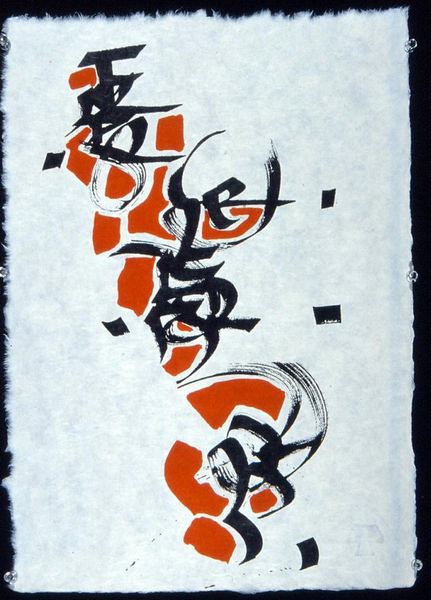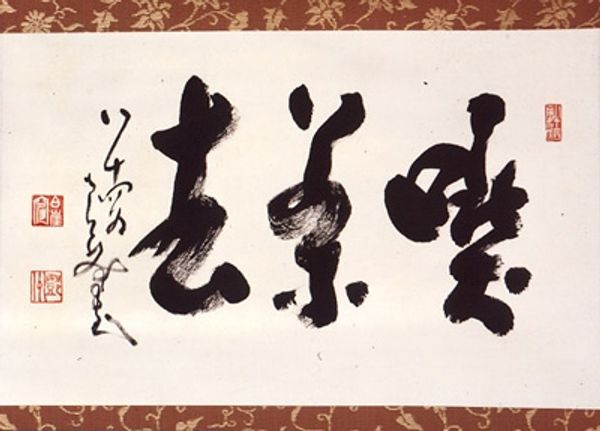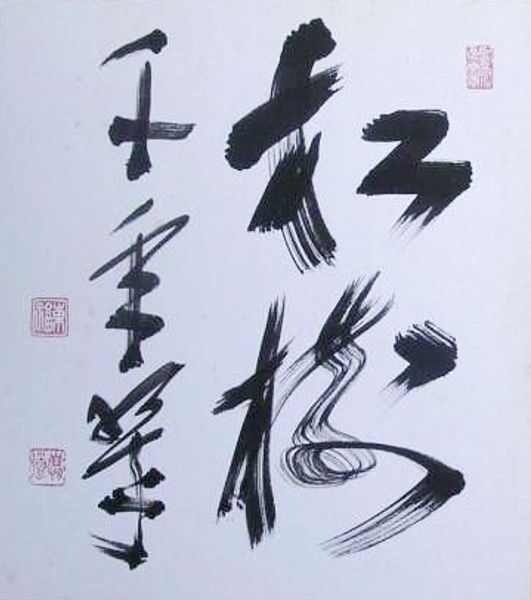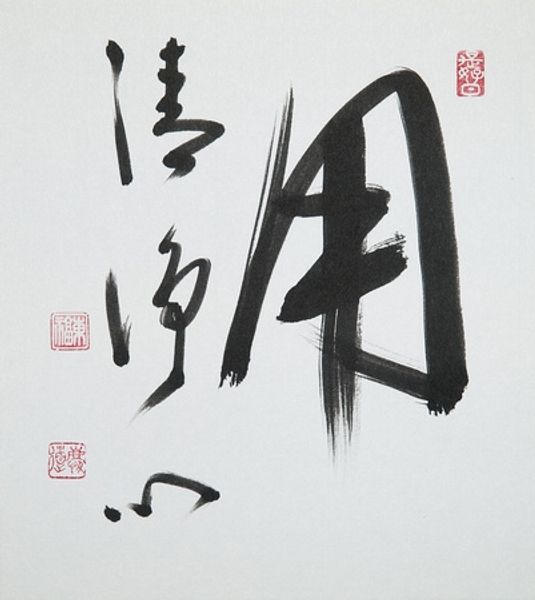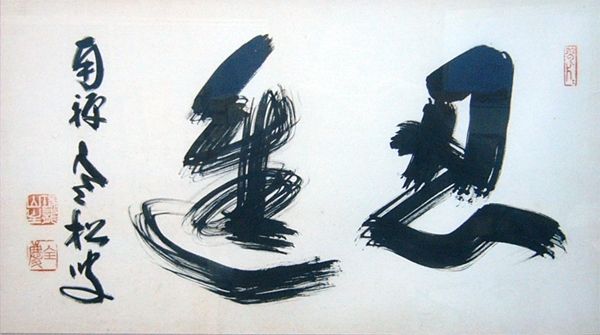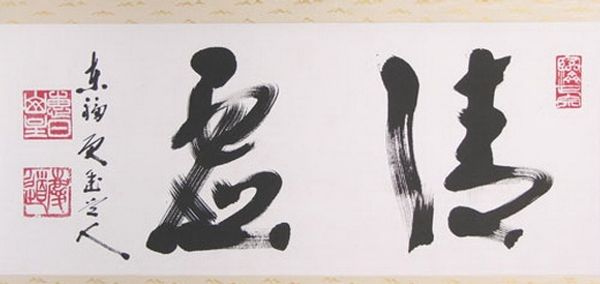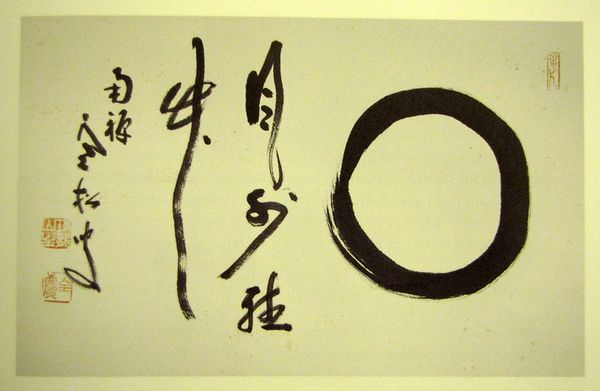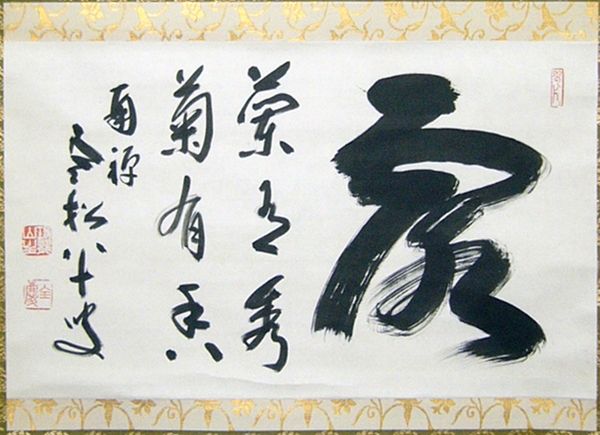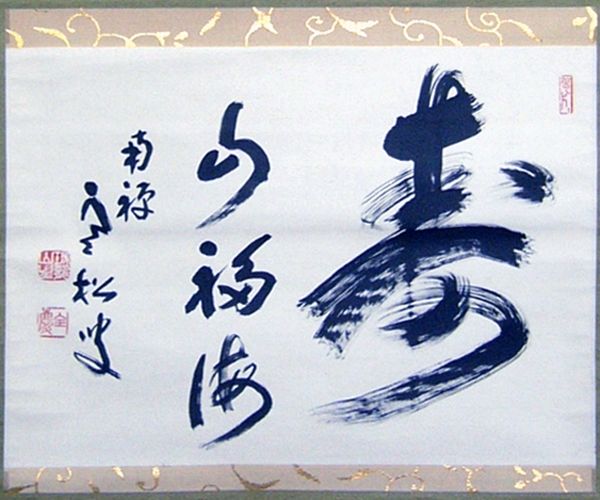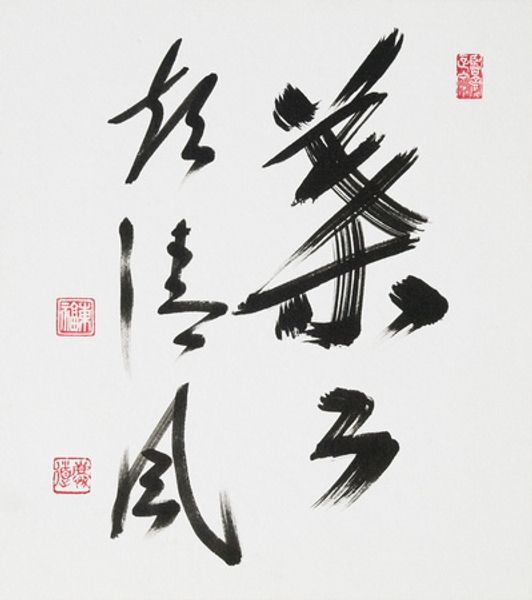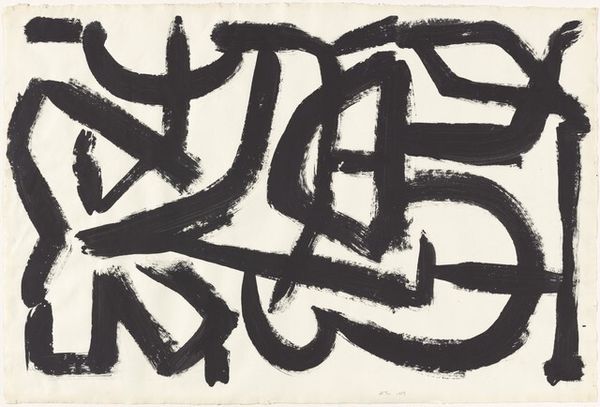
paper, ink
#
hand-lettering
#
small typography
#
asian-art
#
hand drawn type
#
feminine typography
#
hand lettering
#
paper
#
text
#
word art
#
ink
#
hand-drawn typeface
#
geometric
#
calligraphic
#
abstraction
#
experimental typography
#
calligraphy
#
small lettering
Copyright: Keido Fukushima,Fair Use
Curator: This piece is a work of calligraphy by Keido Fukushima, titled "Kusoudo Temple, Empty Nest Zendo," rendered in ink on paper. Editor: At first glance, I’m struck by the dynamic energy. The thick, dark strokes against the pale paper create such bold contrast; there's a powerful flow across the whole piece. Curator: Fukushima was a prominent Zen Buddhist monk, and his calligraphy reflects the spiritual discipline of Zen practice. The piece’s title points to its origin—the Kusoudo Temple, which emphasizes Zen Buddhism—giving further context. Editor: So, the calligraphy itself becomes an extension of his spiritual practice, a visual manifestation of Zen principles. Looking at the forms, the characters, while abstract to my Western eye, communicate a sense of intentionality and controlled spontaneity. Are they recognizable characters? Curator: While undated, it’s fairly characteristic of his work. The characters are written in a semi-cursive style, making them recognizable to those familiar with Japanese calligraphy but possessing a sense of freedom outside more conventional forms. The composition itself emphasizes asymmetry. How the seals on either side further affect this image is relevant, too. The whole artistic process relies heavily on traditional materials: ink and paper. Editor: Absolutely. It brings forth themes of balance and the deliberate release of control. We often discuss in social practice art how intention manifests through artistic performance. Here, each brushstroke, each area of white space, signifies potential meanings as performative work and spiritual commitment. How might his other endeavors in the temple contribute to the symbolism portrayed? Curator: We can assume that the meditative aspect of Zen practice also informs the nature of the image itself. Each stroke possesses intent, both spiritual and physical; yet it does possess the character of what some would call action painting—not merely what is depicted in the character itself. The work thus takes on dualistic identities of both image and meaning. Editor: I think recognizing this challenges preconceived notions of artistic creation; understanding this as one layer helps explore how individuals encounter the confluence of Zen thought, visual art, and personal narrative. It is compelling how we consider what art signifies when merged into spiritual identity. Curator: Precisely, it's through that intersection that we begin to unpack Fukushima’s calligraphy and understand its significance within the larger framework of Zen Buddhism and contemporary artistic practice. Editor: A powerful visual representation, reminding us how intertwined spiritual expression and art may become when challenging expectations.
Comments
No comments
Be the first to comment and join the conversation on the ultimate creative platform.
